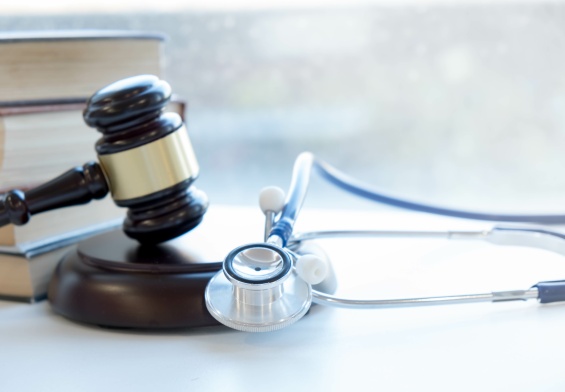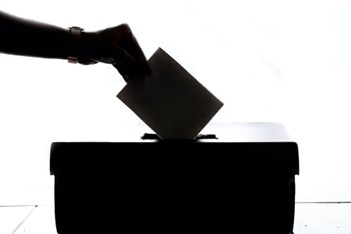Originally posted on: https://ciecka.com/navigating-the-legal-aftermath-of-a-snow-related-car-accident/
Winter’s icy grip often brings not just a blanket of snow but a surge in road accidents. Navigating through snowy and icy conditions is challenging, and even the most cautious drivers can find themselves in unforeseen situations. When a car accident occurs due to these harsh weather conditions, the aftermath can be as daunting as the treacherous roads themselves. Understanding the steps to take following a snow-related car accident is crucial for anyone who finds themselves in this unfortunate situation. From the immediate actions required at the accident scene to the complexities of legal and insurance processes, knowing how to navigate these challenges and find the right car accident lawyer is essential for safeguarding your rights and well-being.
The Immediate Aftermath: Safety and Documentation
In the immediate aftermath of a snow-related car accident, the priority is to ensure the safety of everyone involved. If the accident is minor and there are no serious injuries, move the vehicles to the side of the road to avoid obstructing traffic and to prevent any further accidents. However, if the vehicles are badly damaged or if there are injuries, it’s best to leave them where they are and turn on hazard lights to alert other drivers.
Once safety is ensured, it’s crucial to start documenting the accident scene, which is a key step in the legal process that follows. Begin by taking photographs from different angles, capturing the positions of the vehicles, the condition of the road, any skid marks, and the surrounding area. These photos can provide valuable evidence about the road conditions and the impact of the accident.
Gathering information from other parties involved in the accident is another critical step. Exchange names, contact information, insurance details, and vehicle information with the other driver(s). If there are any witnesses to the accident, their accounts can be invaluable. Collect their contact information as well, as their testimony might be needed later.
If the police arrive at the scene, they will file an accident report, which is an important document for insurance and legal purposes. Make sure to get a copy of this report or the report number. The police report typically includes the officer’s assessment of the accident, which can be pivotal in determining fault and liability.
In cases where the accident is severe, or if there are disagreements about what happened, consider getting a professional accident reconstruction. This can provide an expert’s perspective on how the accident occurred, which can be particularly useful in complex situations involving icy roads and poor visibility.
Seeking Medical Attention
After ensuring safety and documenting the accident scene, seeking medical attention is a critical next step, regardless of whether injuries seem apparent. Snow-related car accidents can often result in injuries that may not be immediately noticeable due to the adrenaline rush or shock experienced by those involved. Some common injuries, such as whiplash, concussions, or internal injuries, can have delayed symptoms. Therefore, it’s essential to get a thorough medical evaluation as soon as possible after the accident.
When you visit a healthcare professional, be sure to inform them that you’ve been involved in a car accident. This information will guide them to conduct appropriate examinations and tests to rule out or identify any injuries related to the accident. Even minor symptoms like dizziness, discomfort, or slight pain should be reported, as they could be indicators of more serious issues.
The documentation provided by medical professionals will serve as a vital piece of evidence in your case. Medical records, treatment plans, and doctor’s notes are crucial in establishing the extent and causation of your injuries. These documents can significantly influence insurance claims and personal injury lawsuits, as they provide an official record of the injuries sustained due to the accident.
Dealing with Insurance Claims
Dealing with insurance claims after a snow-related car accident can be a complex and often daunting process. It’s a crucial step where the details matter, and the approach you take can significantly impact the outcome of your claim. When initiating a claim, it’s important to be prepared and informed.
The first step is to notify your insurance company about the accident as soon as possible. Most insurance policies require prompt reporting of any incidents. When you make this initial contact, provide a factual account of what happened, but be cautious with the details you share. It’s advisable to stick to the basic information – the time, location, and nature of the accident – without delving into specifics or admitting fault. Remember, the conversation is likely to be recorded and can be used in the evaluation of your claim.
Gather and organize all the documentation related to the accident before you start the claims process. This includes the police report, photographs of the accident scene, witness statements, and all medical reports and bills related to injuries from the accident. Having all this information at hand will help in presenting a comprehensive claim to the insurance company.
When dealing with insurance adjusters, keep in mind that their primary goal is to settle the claim for as little as possible. They are skilled negotiators and may employ various tactics to minimize the payout. This can include questioning the severity of your injuries, suggesting that pre-existing conditions are to blame, or disputing the liability in the accident. It’s important to remain firm and confident in the validity of your claim.
Understanding Legal Rights and Liability
Understanding your legal rights and the nuances of liability in the aftermath of a snow-related car accident is crucial for anyone involved in such an incident. The complexity of these accidents, often exacerbated by challenging weather conditions, requires a clear comprehension of how liability is determined and what legal rights you possess.
In the realm of car accidents, liability is typically centered around the concept of negligence. Determining who was negligent in a snow-related accident involves assessing who failed to exercise reasonable care under the circumstances. For instance, drivers are expected to adjust their speed and driving style to accommodate for icy roads and reduced visibility. Failure to do so, resulting in an accident, could be deemed negligent behavior.
However, liability in snow accidents can be multifaceted. It’s not always solely the drivers who might be at fault. For example, if a poorly maintained road contributed to the accident, the responsibility could partially or entirely fall on the municipality or agency responsible for road maintenance. Similarly, if a vehicle’s failure played a role in the accident, such as brakes failing on icy roads, the manufacturer or a recent service provider might share in the liability.
Understanding your legal rights in these scenarios is vital, which is why hiring an expert car accident lawyer can be so helpful. You have the right to seek compensation for damages resulting from the accident, which can include medical expenses, lost wages, property damage, and pain and suffering. In cases where the accident results in long-term disability or significant lifestyle changes, you may also be entitled to compensation for future losses and medical expenses.
Given the complexities involved, consulting with a personal injury lawyer can be invaluable in understanding and asserting your legal rights. A lawyer can help navigate the intricacies of liability, negotiate with insurance companies, and, if necessary, represent you in court to ensure that you receive fair compensation.
The Role of a Personal Injury Lawyer
In the aftermath of a snow-related car accident, the role of a personal injury lawyer becomes pivotal in navigating the complex legal terrain. These legal professionals bring a wealth of knowledge and experience that is crucial in addressing the multifaceted challenges that arise in such cases.
A personal injury lawyer’s role begins with an in-depth consultation to understand the specifics of your accident. They will review all the details, including the accident report, medical records, and any evidence you have gathered. This initial assessment is critical in determining the viability of your claim and the best course of action to pursue.
One of the primary roles of a personal injury lawyer is to establish liability. They will conduct a thorough investigation, which may involve consulting with accident reconstruction experts, to determine who is at fault. In snow-related accidents, this can be complex, as factors like weather conditions, driver behavior, and even the role of local authorities in maintaining safe road conditions can come into play.
Once liability is established, your lawyer will work to quantify the damages. This involves not just the immediate medical expenses and property damage but also long-term impacts like ongoing medical treatment, rehabilitation costs, lost wages, and pain and suffering. In cases of severe injuries leading to long-term disability or life-altering consequences, they will also consider future losses and expenses.
Negotiating with insurance companies is another critical area where personal injury lawyers provide invaluable assistance. They understand the tactics used by insurance adjusters and are skilled in negotiating to ensure you receive fair compensation. Their expertise can be particularly beneficial in complex negotiations, such as those involving underinsured or uninsured motorists, or where multiple parties share liability.
In addition to negotiating settlements, personal injury lawyers are prepared to take your case to court if a fair settlement cannot be reached. They will handle all aspects of the litigation process, from filing the lawsuit to representing you in court. Their objective is to present a compelling case backed by solid evidence to secure the best possible outcome for you.
Filing a Personal Injury Claim
Filing a personal injury claim in the wake of a snow-related car accident is a critical step in seeking compensation for the injuries and losses sustained. This process involves several key stages, each requiring careful attention to detail and adherence to legal procedures.
The first step in filing a claim is the collection and organization of all relevant evidence. This includes the police report from the accident, photographs of the scene, witness statements, and all medical documentation related to the injuries sustained. This evidence forms the foundation of your claim, providing a factual basis for your request for compensation.
Once the evidence is compiled, your personal injury lawyer will draft and file a claim on your behalf. This claim, typically filed against the at-fault party’s insurance company, outlines the details of the accident, establishes liability, and itemizes the damages being sought. These damages can include medical expenses, lost wages, property damage, and compensation for pain and suffering.
A crucial aspect of filing a personal injury claim is accurately calculating the total damages. This calculation goes beyond immediate medical bills and repair costs. It must also consider long-term implications of the injury, such as ongoing medical treatments, rehabilitation costs, future lost earnings, and any permanent disability or disfigurement. Your lawyer will work with medical professionals and financial experts to ensure that the full extent of your damages is accounted for.
After the claim is filed, there may be a period of negotiation with the insurance company. During this phase, your lawyer will advocate on your behalf, using the gathered evidence to justify the compensation sought. These negotiations can be complex and may require several rounds of back-and-forth discussions to reach a settlement that adequately covers your damages.
If a fair settlement cannot be reached through negotiations, your lawyer may advise proceeding to trial. In court, your lawyer will present your case, including evidence and expert testimony, to a judge or jury. They will argue on your behalf, highlighting the negligence of the other party and the impact of the injuries on your life.
Throughout the process, your lawyer will also handle all communications with the insurance companies, opposing lawyers, and any other parties involved. This ensures that your interests are represented consistently and that you are protected from tactics that might undermine your claim.
It’s important to be aware of the statute of limitations for filing a personal injury claim, which varies by state. This legal deadline dictates how long you have to initiate legal proceedings following an accident. Failing to file within this period can result in the loss of your right to seek compensation.
Choosing the Right Lawyer
Choosing the right lawyer to represent you after a snow-related car accident is a decision that can significantly influence the outcome of your case. The right lawyer not only brings legal expertise but also understands the nuances of personal injury law, particularly as it pertains to accidents in adverse weather conditions.
When selecting a lawyer, one of the primary considerations should be their experience and track record in handling similar cases. Look for a lawyer who has successfully represented clients in snow-related car accidents. This specific experience means they are familiar with the challenges and complexities these cases can present, such as proving negligence in slippery conditions or dealing with accidents involving municipal vehicles.
Another important factor is the lawyer’s understanding of local laws and regulations. Personal injury law can vary significantly from state to state, and having a lawyer who is well-versed in the laws of the state where the accident occurred is crucial. They should be knowledgeable about the state’s statutes of limitations, comparative negligence rules, and any specific regulations related to winter driving and road maintenance.
Communication is key in any lawyer-client relationship. Choose a lawyer who is accessible and responsive, someone who will keep you informed throughout the process and is available to answer your questions and address your concerns. A good lawyer should be able to explain legal concepts in understandable terms and keep you updated on the progress of your case.
It is also important to consider the lawyer’s approach and strategy. During initial consultations, discuss their plan for handling your case. A competent lawyer will provide a clear strategy on how they intend to proceed, from investigating the accident to negotiating with insurance companies and, if necessary, litigating in court.
Lastly, trust your instincts. Your comfort level with the lawyer is important. You should feel confident in their abilities and comfortable with their approach. The right lawyer will not only advocate for your best interests but will also support you through what can be a challenging and stressful time.
Securing Your Future: Navigating the Road to Recovery After a Snow-Related Car Accident
Navigating the aftermath of a snow-related car accident involves a multifaceted approach, encompassing immediate safety measures, medical attention, understanding legal rights, negotiating with insurance companies, and comprehending the full value of your claim. Each of these steps is crucial in securing your physical, emotional, and financial recovery.
At the Law Offices of Vincent J. Ciecka, we understand the intricacies of personal injury law and approach each case with compassion and dedication. Our team is well-equipped to handle the complexities of snow-related car accidents. Our commitment to client care and our track record of successful outcomes makes us a trusted ally in your legal journey.
Remember, the decisions you make following an accident, from documenting the scene to seeking the right legal representation, can have a lasting impact on your life. It’s essential to approach each step with diligence and informed care. With our support and expertise, you can confidently navigate the legal complexities of your situation and focus on your recovery.




